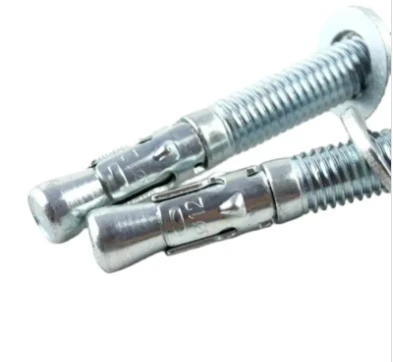nov . 17, 2024 22:09 Back to list
screw types
Understanding Screw Types A Comprehensive Guide
Screws are essential fasteners used in a variety of applications, ranging from simple household tasks to complex industrial projects. At first glance, screws might seem like a straightforward subject, but the diversity in screw types is quite vast, each designed for specific purposes. Understanding the various types of screws can help you choose the right one for your project, ensuring durability and effectiveness.
1. Wood Screws
Wood screws are specifically designed for fastening wood pieces together. They have sharp points and coarse threads that help them grip into the wood grain securely. These screws come in various lengths and diameters to accommodate different wood thicknesses. Some wood screws also feature a slightly wider head to provide better surface area for driving into the material, preventing the screw from sinking too deep.
2. Machine Screws
Machine screws are used in machinery and equipment to join metal parts together. They typically have a uniform diameter and require a pre-tapped hole for installation. Available in various head styles—such as flat, round, and hex—machine screws can be used in conjunction with nuts or inserted directly into threaded holes. They are often made from steel, stainless steel, or brass, providing varying levels of strength and corrosion resistance.
Sheet metal screws are designed explicitly for fastening metal sheets or other thin materials. They possess sharp threads that can cut into metal surfaces, creating their own mating threads. The head of these screws can be either flat or pan-shaped, allowing for different types of drive systems. Due to their ability to provide a strong hold in thin materials, sheet metal screws are widely used in automotive and manufacturing applications.
4. Lag Screws
screw types

Also known as lag bolts, lag screws are heavy-duty fasteners primarily used for fastening wood to wood, or wood to metal. They feature a large diameter and coarse threads that enable them to provide a strong hold even in structural applications. Lag screws typically require a pilot hole to avoid splitting the wood. Their hex head design allows for easy driving with a wrench.
5. Self-Tapping Screws
Self-tapping screws simplify the fastening process by creating their own threads in the material they are driven into, which can be metal, plastic, or even wood. These screws save time and effort by eliminating the need for pre-drilling holes. They come in various head styles and are widely used in applications such as electronics, appliances, and automotive manufacture.
6. Deck Screws
Deck screws are specifically designed for outdoor use, particularly in building decks, fences, and other structures exposed to the elements. These screws are often coated to resist corrosion and provide additional protection against moisture. They typically have a sharp point and coarse threads to ensure a secure hold in treated lumber or composite materials.
7. Drywall Screws
Used primarily in the construction of walls and ceilings, drywall screws are designed to fasten drywall sheets to wooden or metal studs. They have a bugle-shaped head that allows for easy countersinking, making them less likely to tear through the drywall surface. Their fine threads provide a firm grip, making them ideal for lightweight applications.
Conclusion
With so many screw types available, it's crucial to select the one that best fits your specific needs. Factors such as the material you are fastening, the required strength, the environment, and the installation method should all be taken into consideration. By understanding the various screw types and their applications, you can ensure your projects are secure and built to last. Whether you're a professional tradesperson or a DIY enthusiast, mastering the nuances of screw selection is an invaluable skill that can greatly enhance the quality and longevity of your work.


